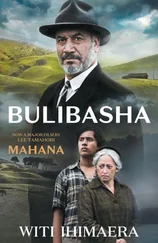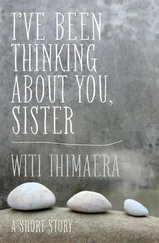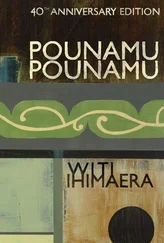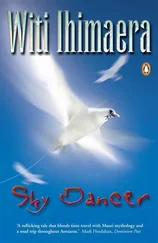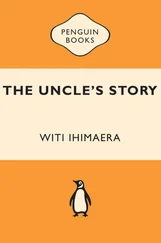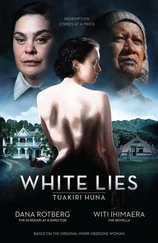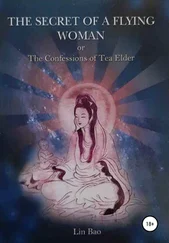What did Maori call him? We named him ‘Bryce ko’uru’: Bryce the murderer. How could we expect to obtain justice from a man who called Parihaka ‘that headquarters of fanaticism and disaffection’?
Bryce served under four premiers: Atkinson, Grey, John Hall and Frederick Whitaker. Whether they liked him or not doesn’t matter, and although John Hall privately criticised him, there was implicit condoning of his work.
He was their familiar .
While I’m at it, let me get something else off my chest.
As I mentioned earlier, it wasn’t until the Maori Land March of the 1970s that I woke up to my own history. Josie sometimes liked to say that even though I was a history teacher I had a thick head or, rather, a slow one. You had to go, ‘Knock, knock, is anybody at home?’ a few times before you got an answer.
After I returned from the march I said to myself, ‘Right, I’ll give it a go.’ I decided to present the class with a lesson on the Maori Wars, except that from the very beginning it became problematic. That title, for instance — or ‘Land Wars’ — was a Pakeha definition. What did we call them? The Pakeha Wars!
Can you see my problem?
Now don’t forget this was some forty years ago, and the Maori protest movement was only beginning: clashes with police at Waitangi, Raglan and Bastion Point and the pitching of tents in the grounds of Parliament itself. I should have expected that after the lesson there would be complaints and that I would be called in by the headmaster.
‘Are you going radical on me?’ he asked. ‘What do you think you’re doing! The Land Wars aren’t in the curriculum and, even if they were, it wouldn’t be your version. Go back to teaching British history so that the students can get University Entrance.’
Well, that really got my goat, and I couldn’t have been the only Maori who was pissed off about that other ‘version’ where they won, we lost, end of story. Fortunately, as the decade progressed, other Maori — and Pakeha teachers too — began to make a fuss about the teaching of New Zealand history, including Maori history. Today, thank goodness, it’s now an examination subject. That hasn’t stopped me, however, from spending the rest of my life working out how to rebalance telling the history from a Maori point of view.
Is it difficult? Is it what ! Even in this account of Parihaka and my kuia Erenora’s life most of the details that I’m deploying about Parihaka in the narrative are taken from accounts by Pakeha historians. Why? Well, Pakeha wrote things down; Maori didn’t.
Then the problem is exacerbated because of the inadmissibility of oral evidence as historical fact, although that’s changing a bit now. And as far as Erenora’s account goes, some Pakeha historians would question its validity because, although it was written down, there are more reliable sources — apart from which her account is judged subjective, at the very least.
Why should an oral account be suspect? Maori have had hundreds of years to hone the memory. Yes, it’s oral: tough. Get over it. Perhaps the tribes need to resuscitate the old Maori schools of learning with their disciplines of memorisation. Let Maori write the history that we want to, from our own sources and our own perspective, that’s all I’m saying.
Let me now add a few words about the fair-haired gentleman.
Had he not ridden into Parihaka that day he, Horitana and Erenora might not have met as foes — and things might have developed differently between them.
This settler was building a large two-storeyed country house from which he planned to rule his estate. The fact that it was grander than most other houses did not bother him; he could afford it. The architecture was typically colonial, square and white with verandahs top and bottom, standing in the middle of a flat expanse that he was planting with English trees and a garden. A drive of loose pebbles led to a turning circle in front, where a flight of steps rose to double doors. Above the doors was emblazoned the motto, ‘Fais ce que tu voudrais, Do what thou wilt.’
Of course I know who he was: Pakeha of the times tell us that he was a man of wit, charm and sophistication. He was single, and it was hoped, among the matrons of Taranaki, that he might marry one of their daughters. As to his personal history, he was the second son of an English lord whose estate had gone to his elder brother, and he had emigrated to Taranaki in the 1860s to the promise of land, riches and prosperity. His desire was to establish his own colonial demesne and breed horses.
Among the settler’s hobbies were two that were highly desirable for a Victorian gentleman to pursue: science and collecting. In New Zealand he had begun to put both to use in the study of the Maori as an anthropological subject and in the collection of our tribal artefacts. Already he had submitted papers to learned British journals on the Taranaki Maori, believing that, in the light of their forthcoming extinction, it was more appropriate to write about them while they were alive and not when they were dead.
I hope you’ll forgive my not giving you his English name; my research on him is unfinished, and I don’t want to unmask him until I’ve completed it.
Erenora, however, had a name for him. In the encounter in Parihaka she had glimpsed the man beneath, the real person glossed over in reliable sources. She called him Piharo, from the Maori word pi’arongo, a very hard black stone, because what she had seen of his i’i, his life force, had been so dark and sinister.
Because she called him that, I shall call him that also.
Let me interpolate a scene from my own imagination as Piharo returns to his estate.
Thunder is booming overhead and lightning cracks the sky apart as he arrives at his house to await the arrival of a doctor who will stitch the places where the lash cut deep.
He still cannot believe the marks on his face are from his own whip. How could this have happened? Not three men but four have been marked on the day that the fugitive Hiroki was pursued into Parihaka.
The fourth is Piharo himself.
While the doctor’s needle criss-crosses the cuts in his face, Piharo’s rage mounts. He groans with pain as the doctor sews together the torn flaps of his left eyelid. When the work is finished, he looks in the mirror at the cicatrice of stitches and waves away the doctor’s apologetic gestures.
‘No,’ Piharo says gallantly, ‘it will be all right.’
All right? Nothing will ever be all right . From this day, for every day henceforth, people will look at his face and know that something happened to him, someone had got the better of him.
Piharo’s obsession grows. The wounds to his face will eventually heal but not the black place the lash has uncovered where unforgiveness dwells. He will make the Maori named Horitana pay — have his pound of flesh — even if he has to wait years to exact it.
CHAPTER NINE
The Year of the Plough
The fugitive Wiremu Hiroki remained in Parihaka under Te Whiti’s protection. Meanwhile, the predations of the Pakeha surveyors continued, and Te Whiti decided that he had to step up the defensive measures against the Pakeha incursions.
Of these deliberate provocations, G.W. Rusden had this to say:
Confident that the Maoris could easily be crushed by the available forces, the despisers of Maori rights were not displeased at the prospect of collision which might at last sweep away the hated guarantees of the Waitangi treaty. [10] Rusden, History , Vol.3, p. 257.
‘Despite our attempts to dissuade them,’ Erenora wrote, ‘the surveyors still kept unlawfully crossing the river into Maori territory, there being no evidence of its legal government purchase. Indeed, when James Mackay asked Te Whiti to cease preventing the surveyors from doing their work, the prophet answered, “You had better go to the government and fix their side first. They are the active parties in the matter, not me. I am living quietly on my land.”
Читать дальше


